The installation height requirement of the busbar of a gantry crane is an important factor in ensuring the safe and stable operation of the crane. According to relevant standards and industry specifications, the following are the main requirements and specifications for the installation height of the busbar of a gantry crane:
General height:
The installation height of the busbar should be determined according to the structural design and use environment of the gantry crane. Generally, the installation height of the busbar should be ensured to be above the maximum lifting height of the crane to avoid interfering with the operation of the crane.
Specific height standards:
According to the “Crane Safety Regulations” (GB 6067) and other relevant standards, the installation height of the busbar should be higher than the highest point of the crane structure, and is usually required to be no lower than the upper edge of the crane main beam to prevent collision during operation.
Distance from other equipment:
Safety distance should be maintained between busbar and other equipment or structures (such as buildings, pipelines, etc.), and a certain gap is usually required during installation to avoid collision caused by equipment operation or maintenance.
Ground height:
The installation height of busbar should also take into account the height of the ground to ensure that it is within the working range of the crane and will not affect ground operations or other equipment.
Environmental factors:
In a humid or corrosive environment, the installation height of the busbar should be appropriately increased to prevent the busbar from being affected by water vapor, corrosion, etc.
Climatic conditions:
Under severe weather conditions (such as strong winds, heavy rain, etc.), the stability of the busbar should also be considered. If necessary, additional support points can be added to improve the safety of the installation.
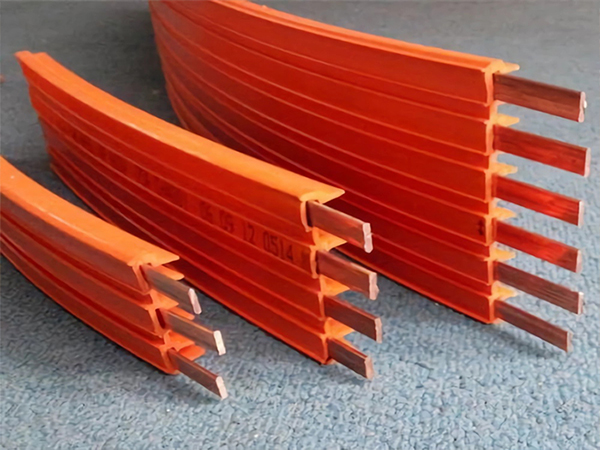
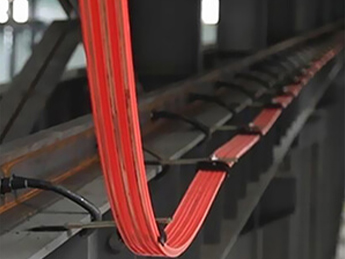
Different types of busbars:
There are many types of busbars (such as aluminum alloy busbars, copper busbars, etc.). Different types of busbars may have different installation height requirements. Please refer to the manufacturer’s technical specifications and recommendations for details.
Installation requirements:
When installing the busbar, ensure its straightness, horizontality and fixity to reduce failures caused by improper installation.
Regularly check the fixing state and contact condition of the busbar to ensure its normal operation.
Maintenance specifications:
Regularly clean and maintain the busbar to keep the contact of the busbar in good condition and avoid dust, oil and other contaminants that affect the normal operation of the busbar.
The installation height of the busbar is crucial to the safe operation of the gantry crane. According to relevant specifications and standards, the height of the busbar should be higher than the highest operating point of the crane, taking into account environmental factors and safety distances. Regular inspection and maintenance can effectively ensure the normal operation of the busbar and reduce safety hazards.
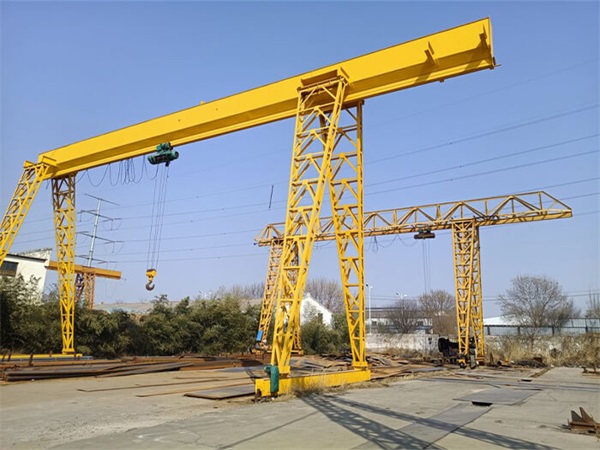
MH type electric hoist gantry crane is used together with CD MD model electric hoists.
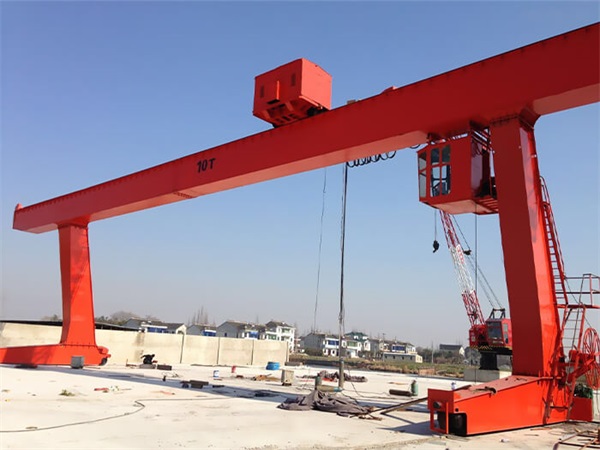
L Type electric hoist gantry crane match with CD1/ MD1, HC type Electric Wire rope hoist, to lifting and transporting the heavy materials, mainly use indoors and outdoors.
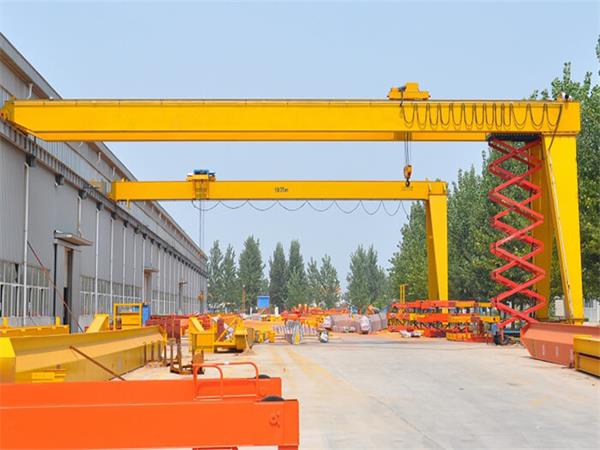
BMH Type Semi Gantry Crane is a bridge-type crane whose bridge is supported on the ground track through outriggers on both sides.

A-type Double Beam Hook Gantry Crane, It is mainly composed of a gantry (main beam, outriggers, lower beam, etc.), a lifting mechanism, a running mechanism and an electronic control part.
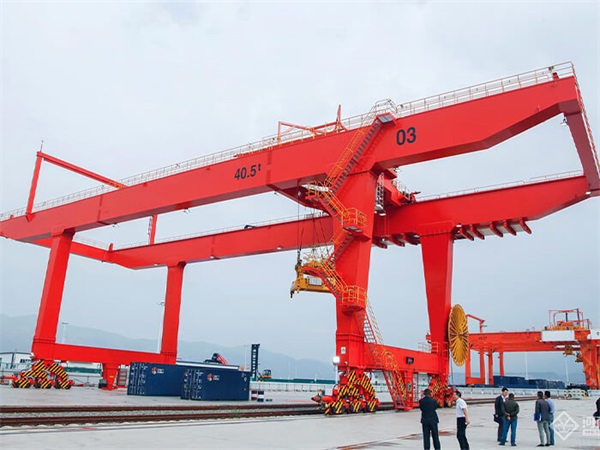
The rail-mounted container gantry crane (English abbreviation RMG) is one of the special machines for container yards.
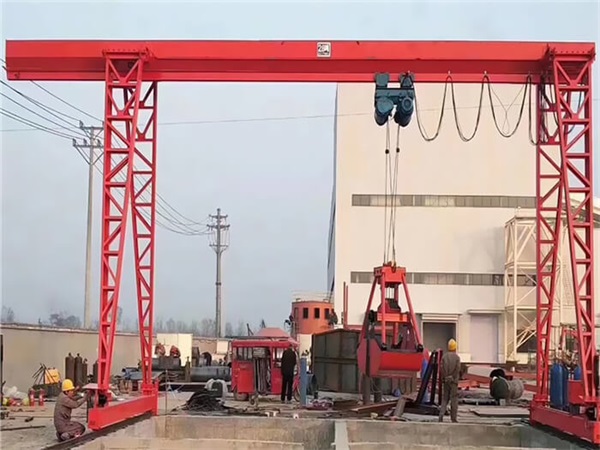
MZ Type Double-beam Grab Gantry Crane are mainly used in conjunction with bridge cranes, port cranes, and winches. They are widely used in ports, power plants, docks, chemical industries, etc. to grab various types of loose accumulations, such as ore, coal, slag, etc.
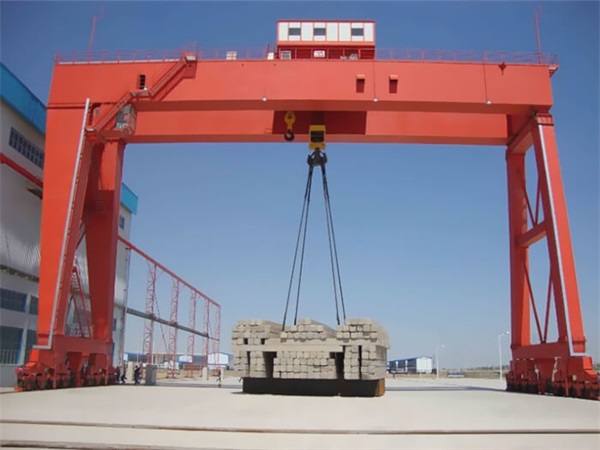
Winch Gantry Crane are used in open warehouses, windy areas, material stocks area, bridge building, concrete industry, cement plant, granite industry, construction industry, engineering industry, port, transportation, construction, dockyard, and other building sites for lifting and loading unloading objects.
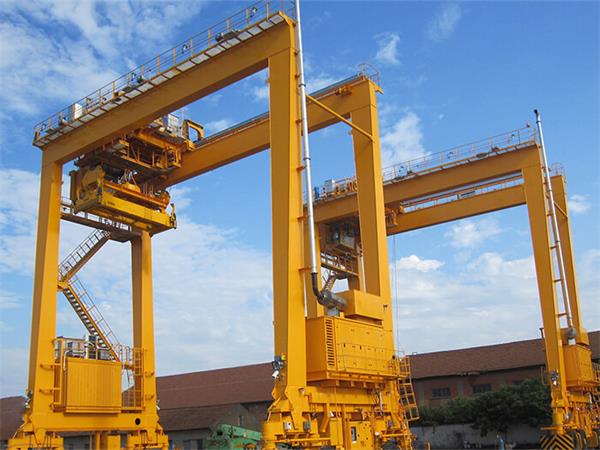
U Type Subway Turn Slag Hook Gantry Crane also known as subway slag flipping machine, slag flipping gantry crane, slag flipping gantry crane, etc., is a specialized gantry crane used for excavation in subway and tunnel construction projects.
We design cranes that meet your needs. Whether you need to increase safety, maximize production capacity or reliability, or reduce costs, we deliver.